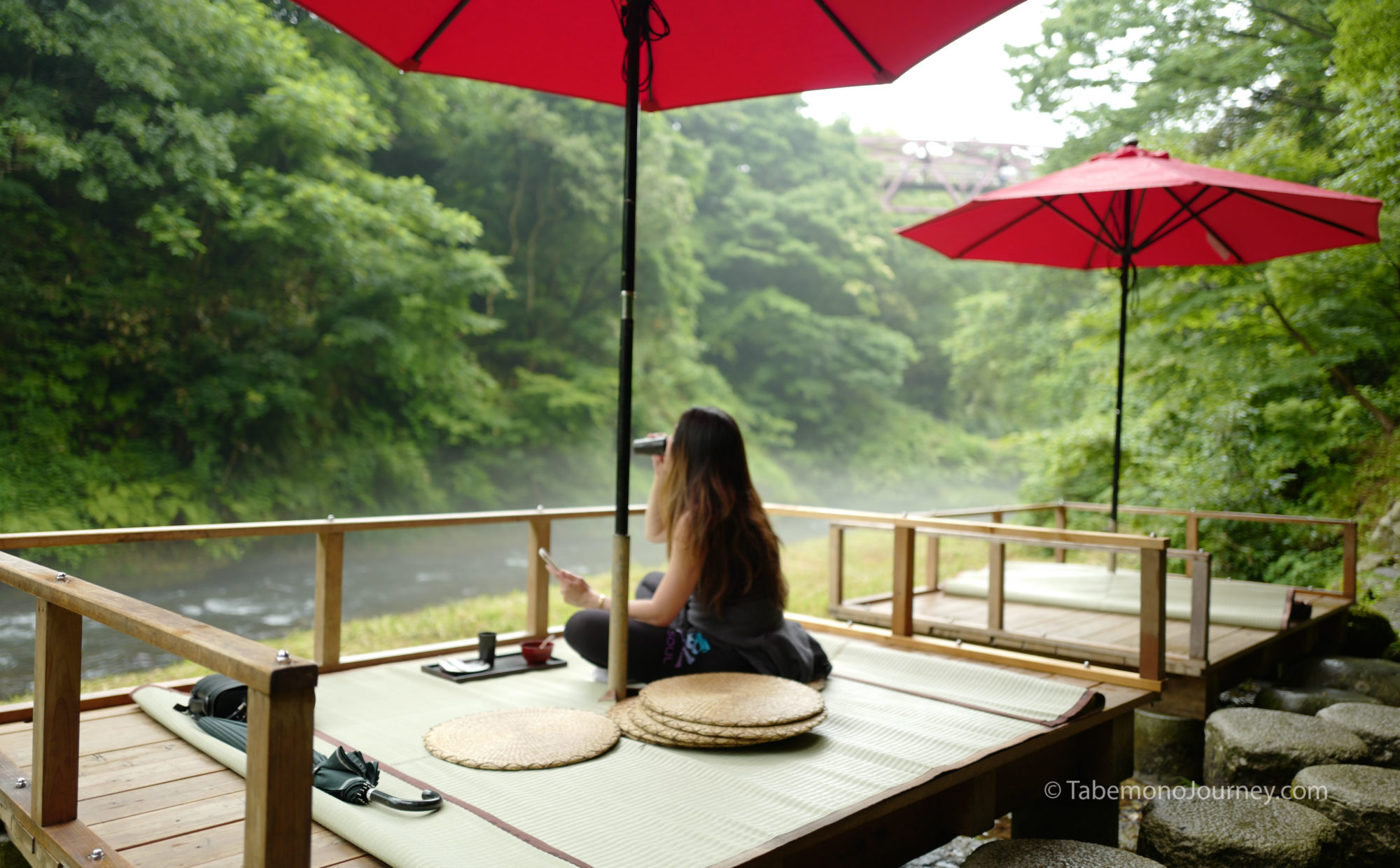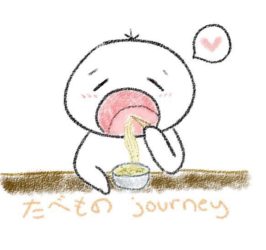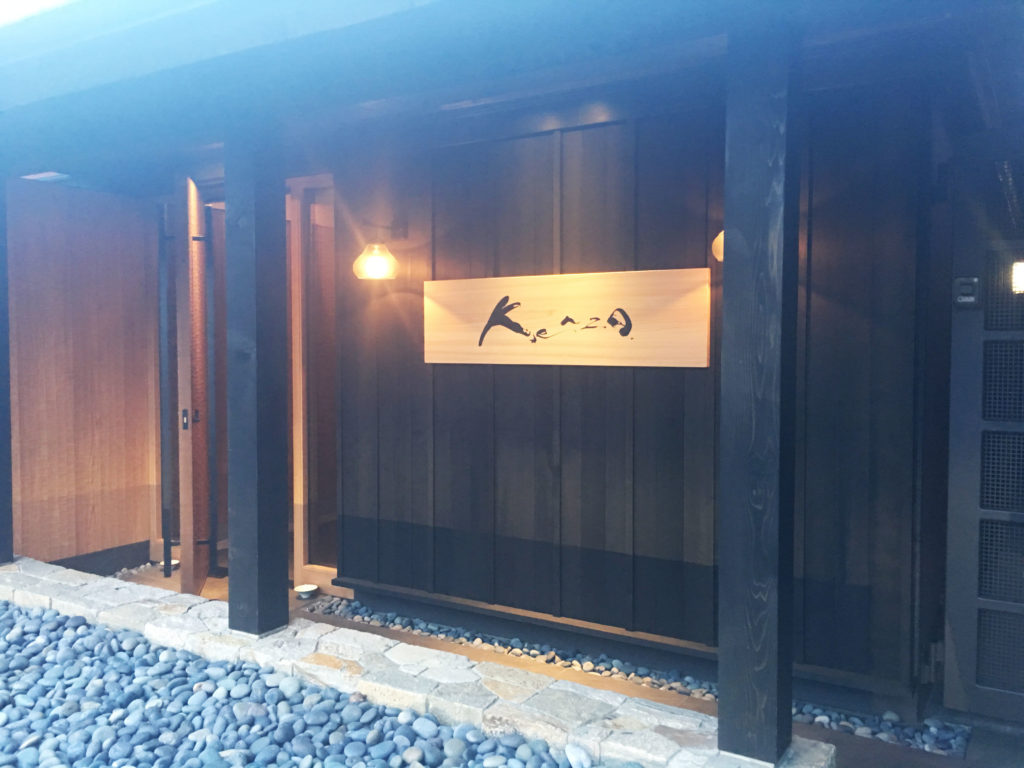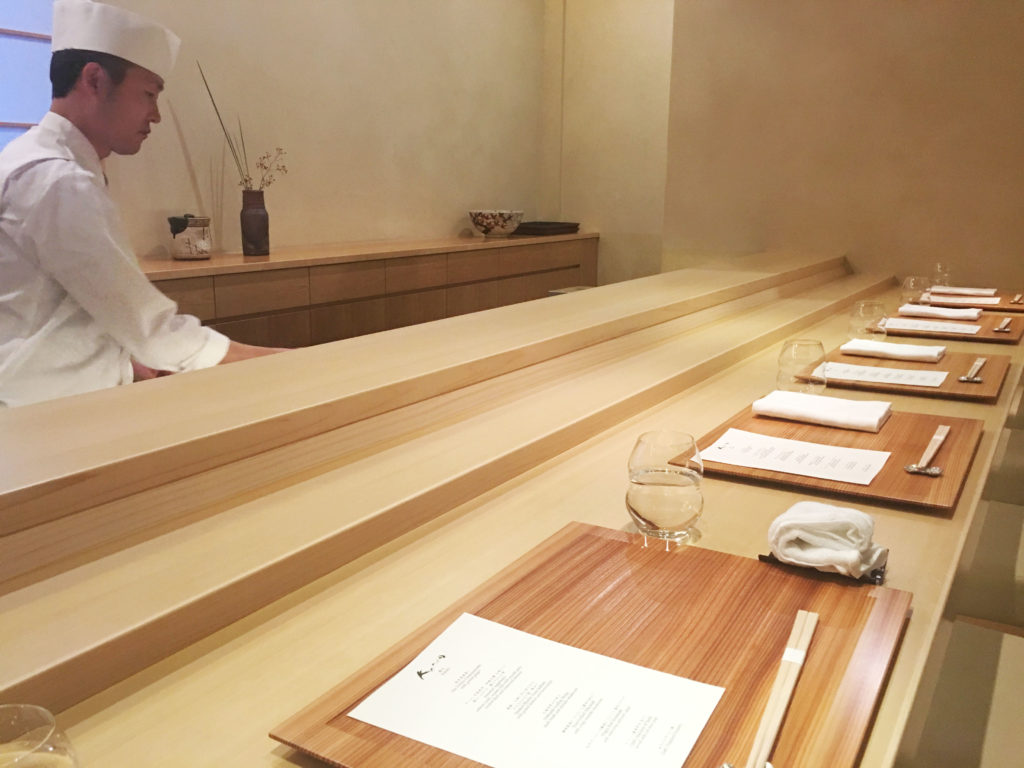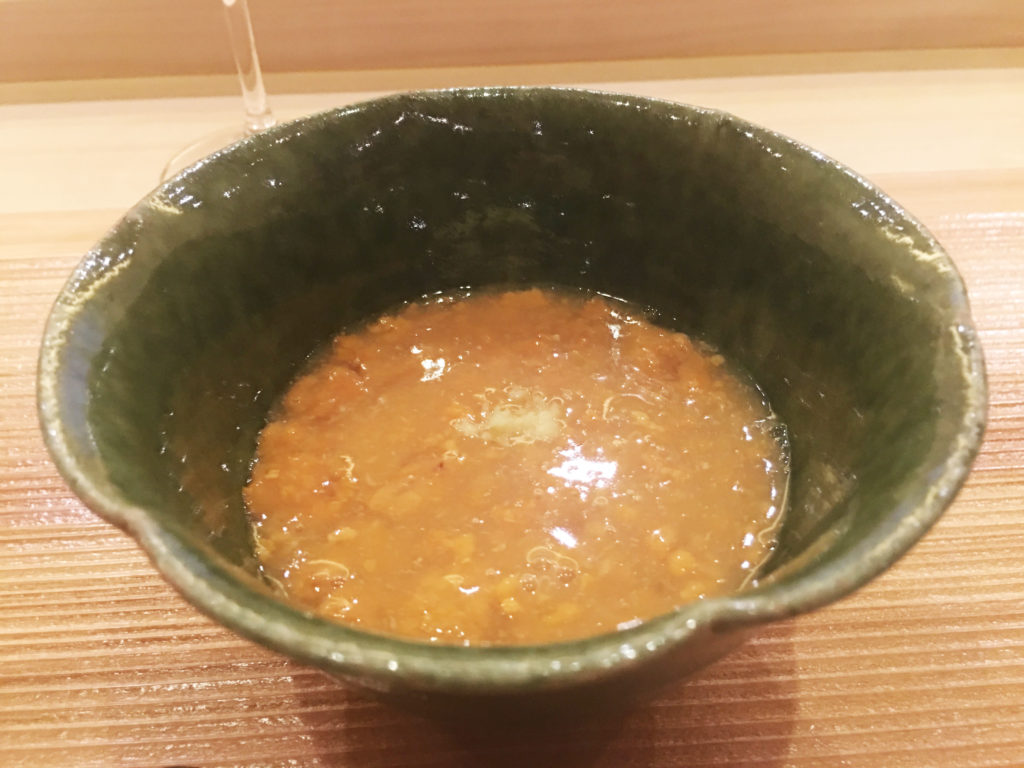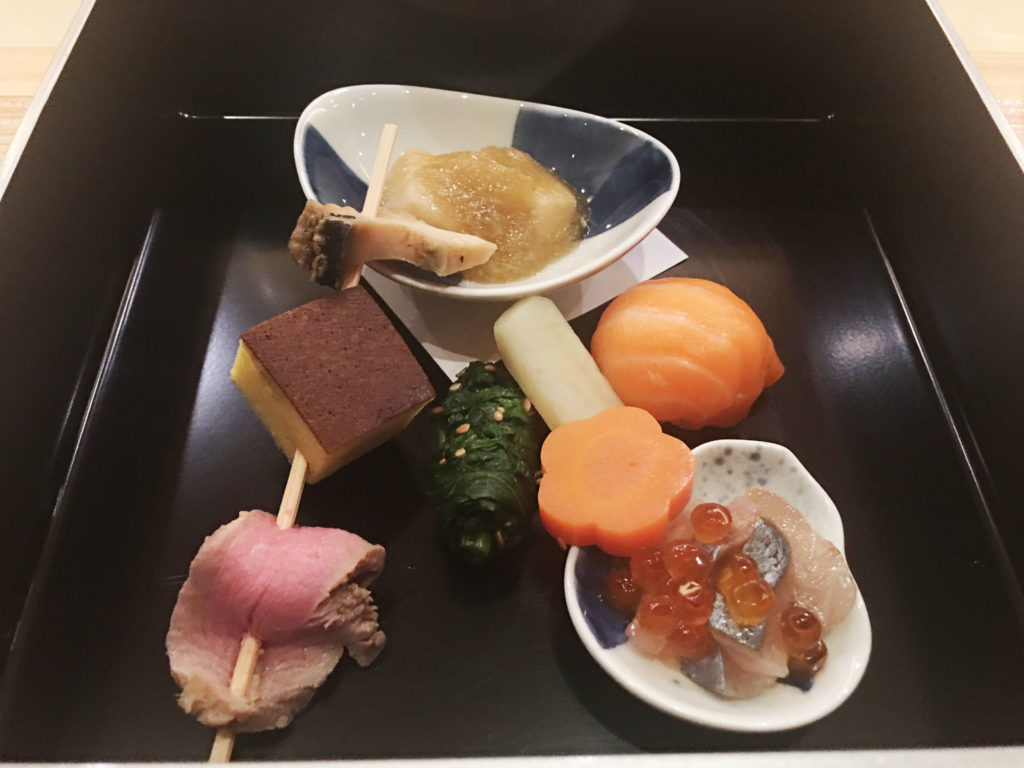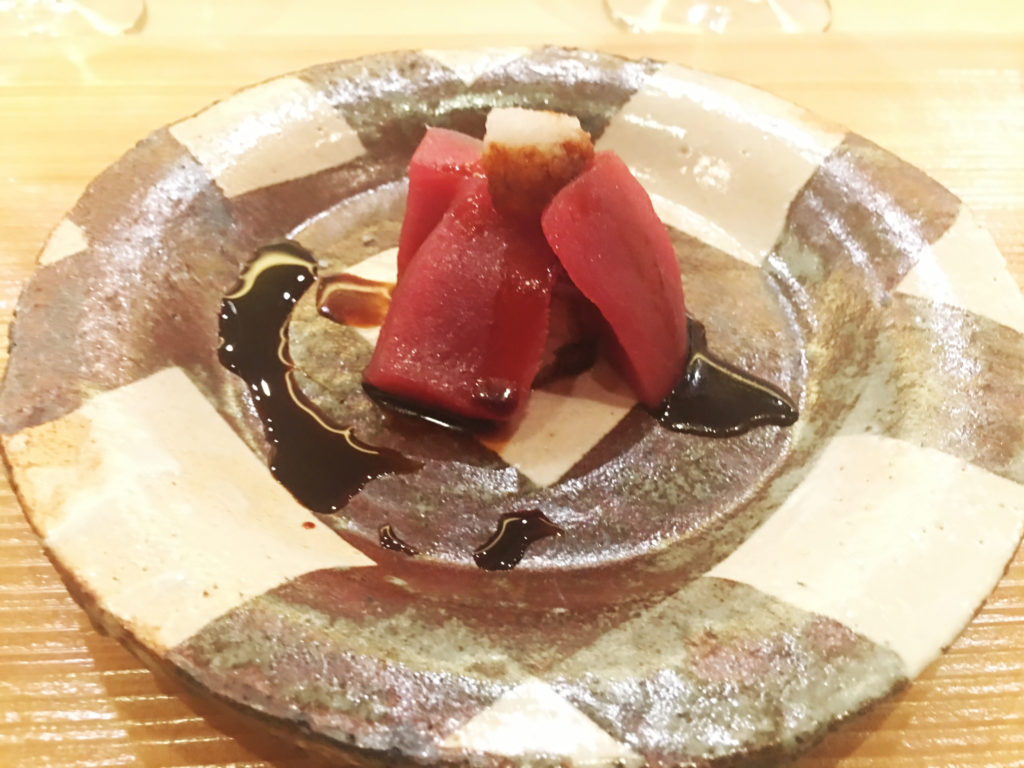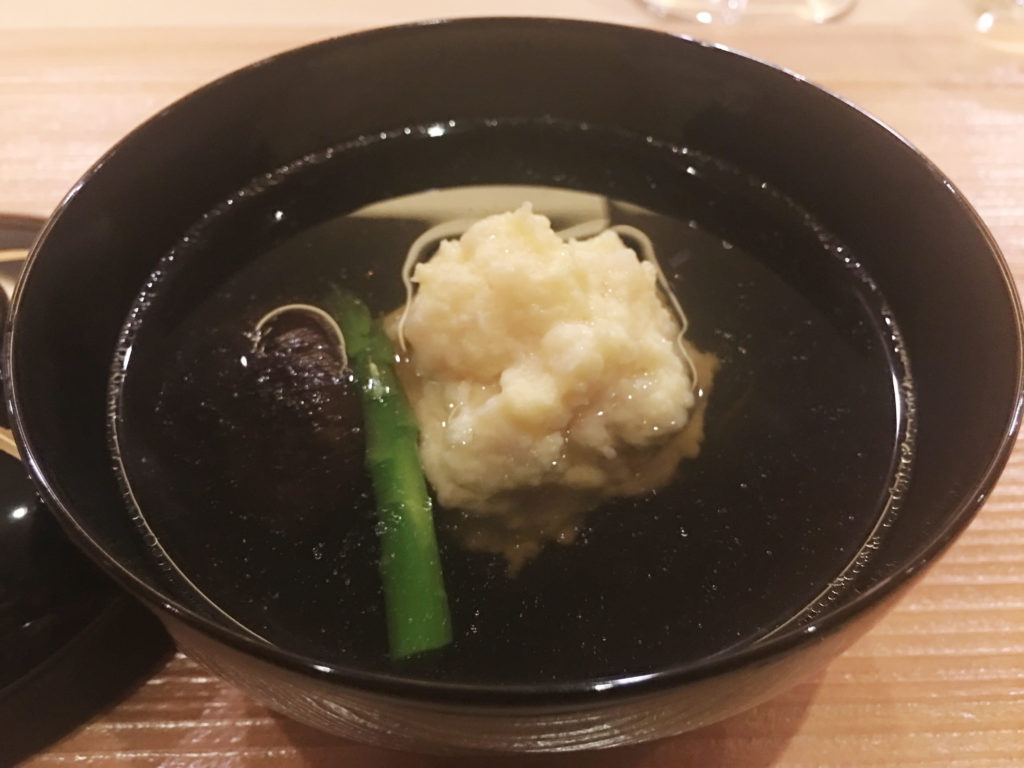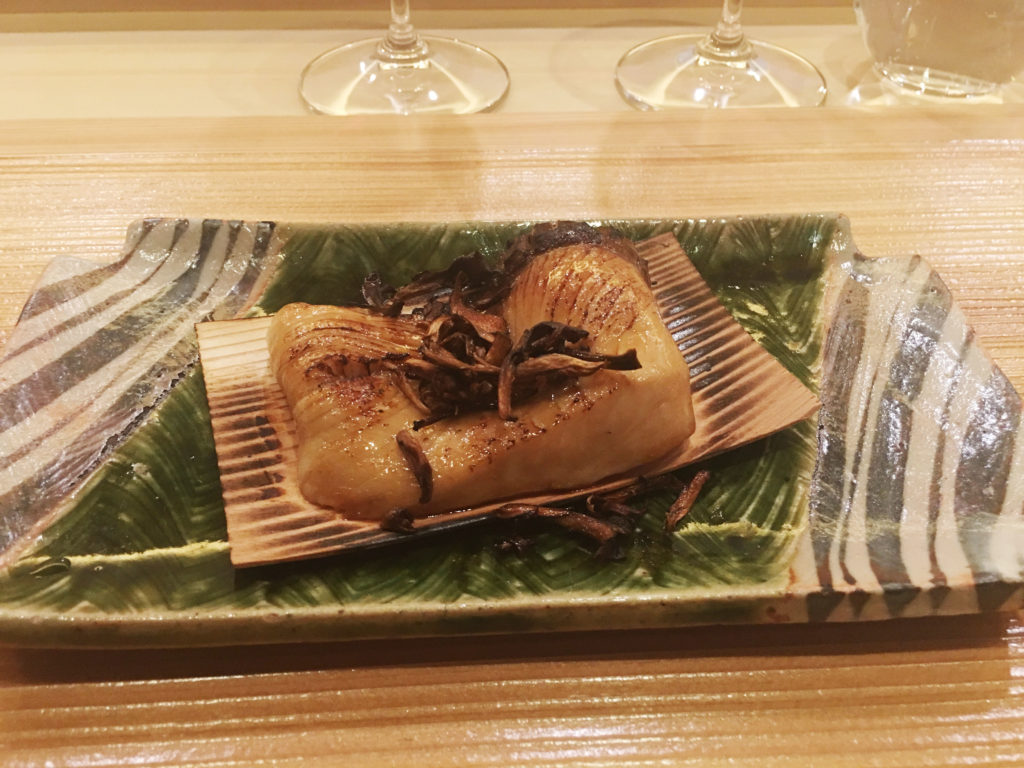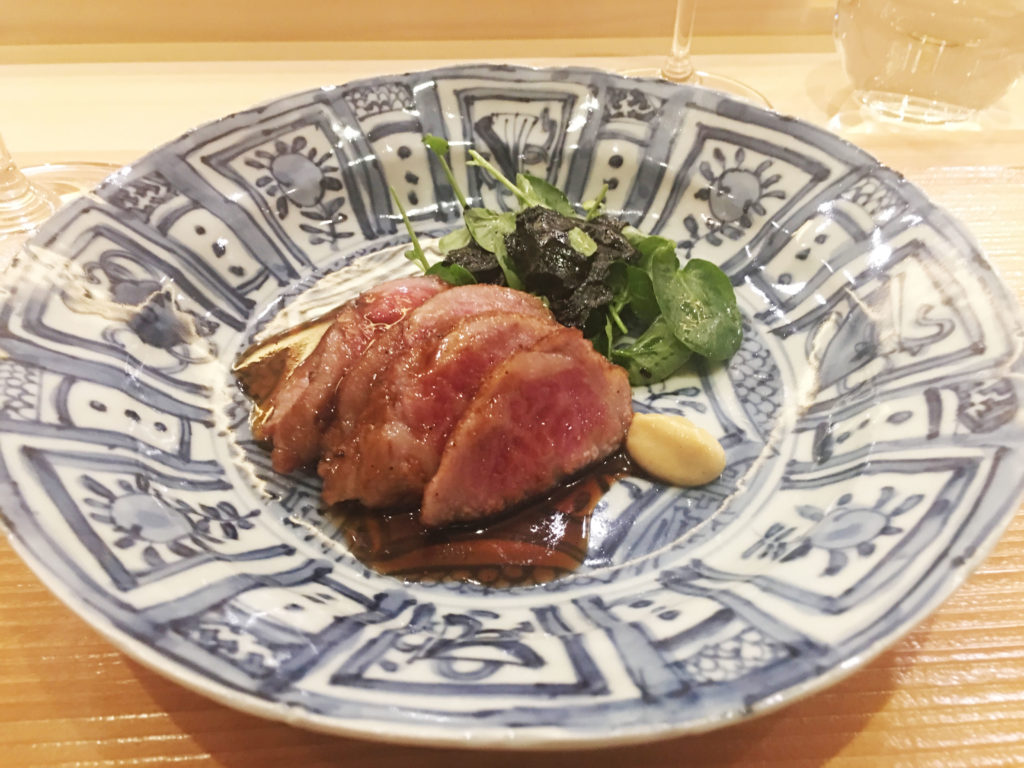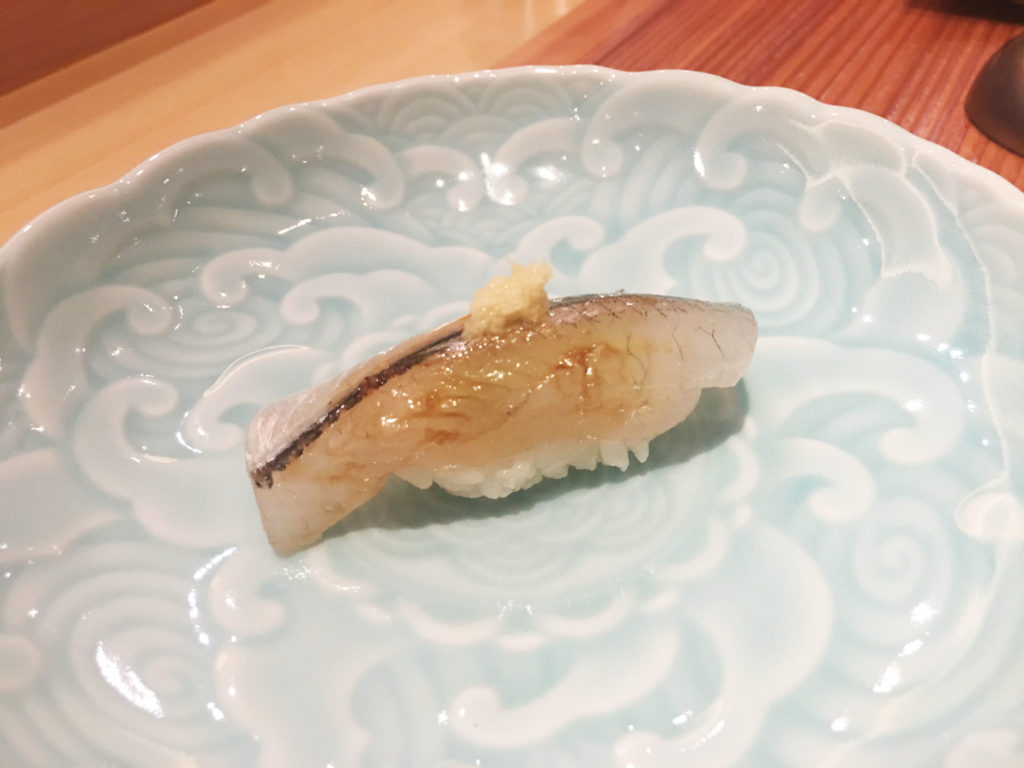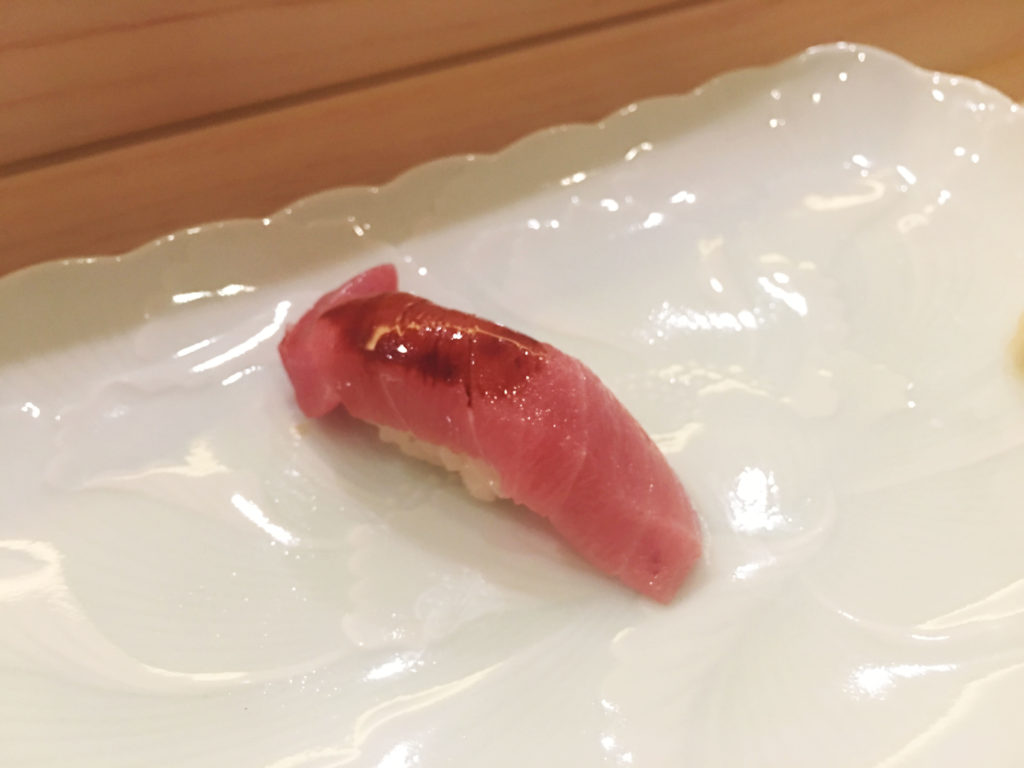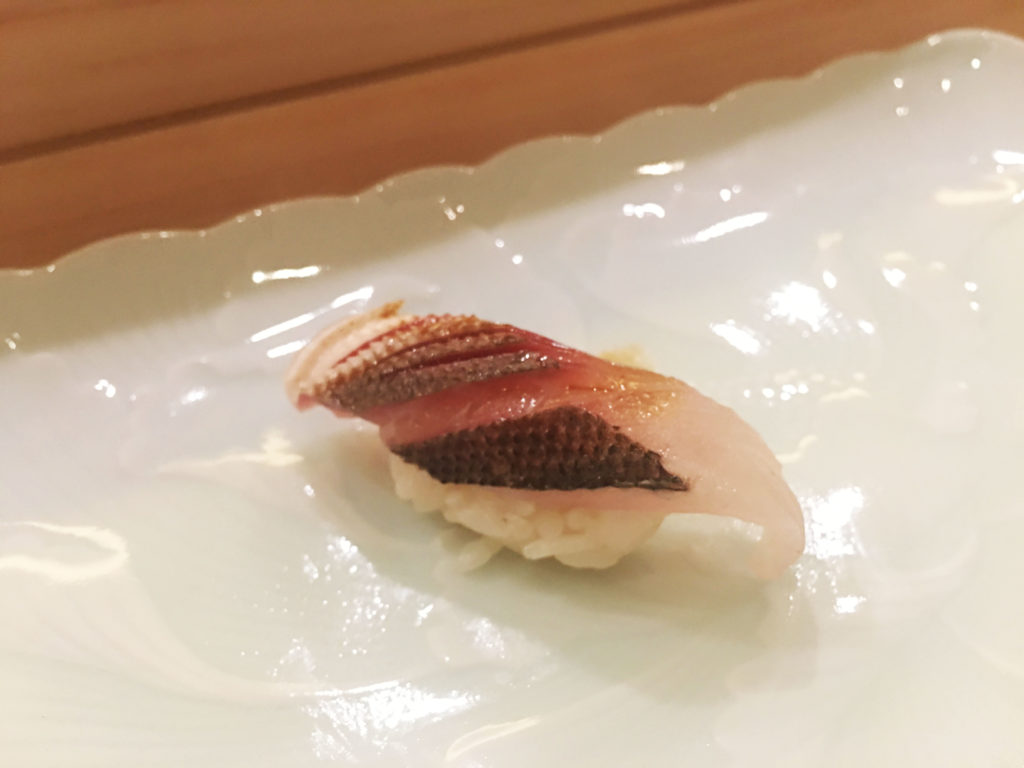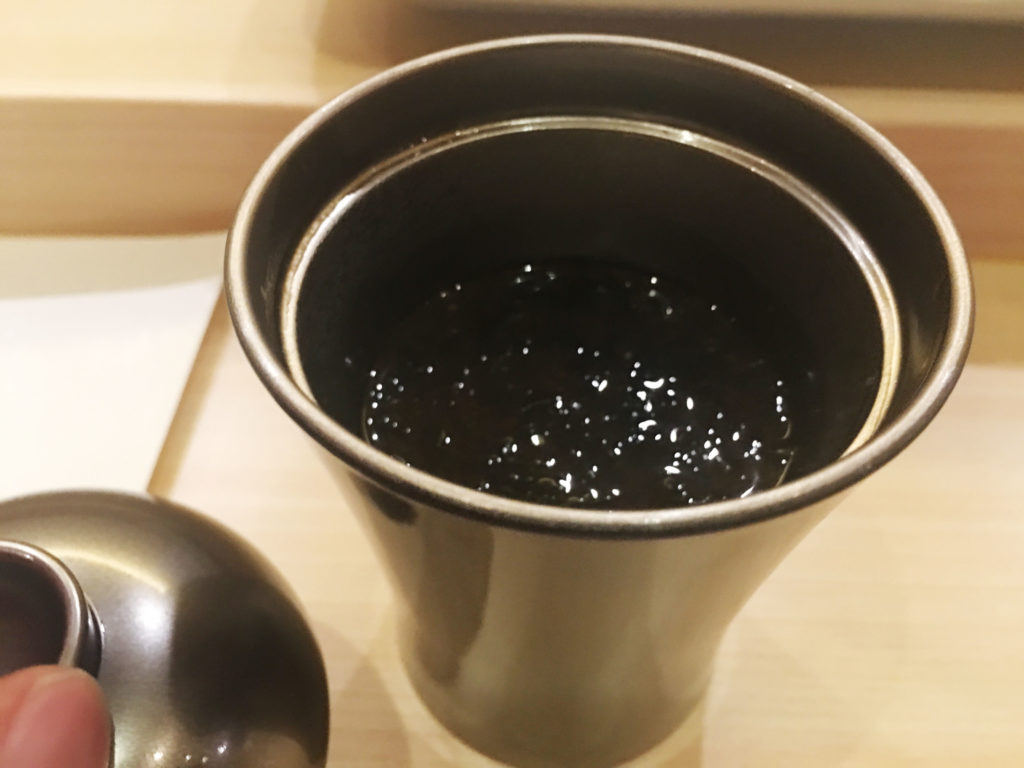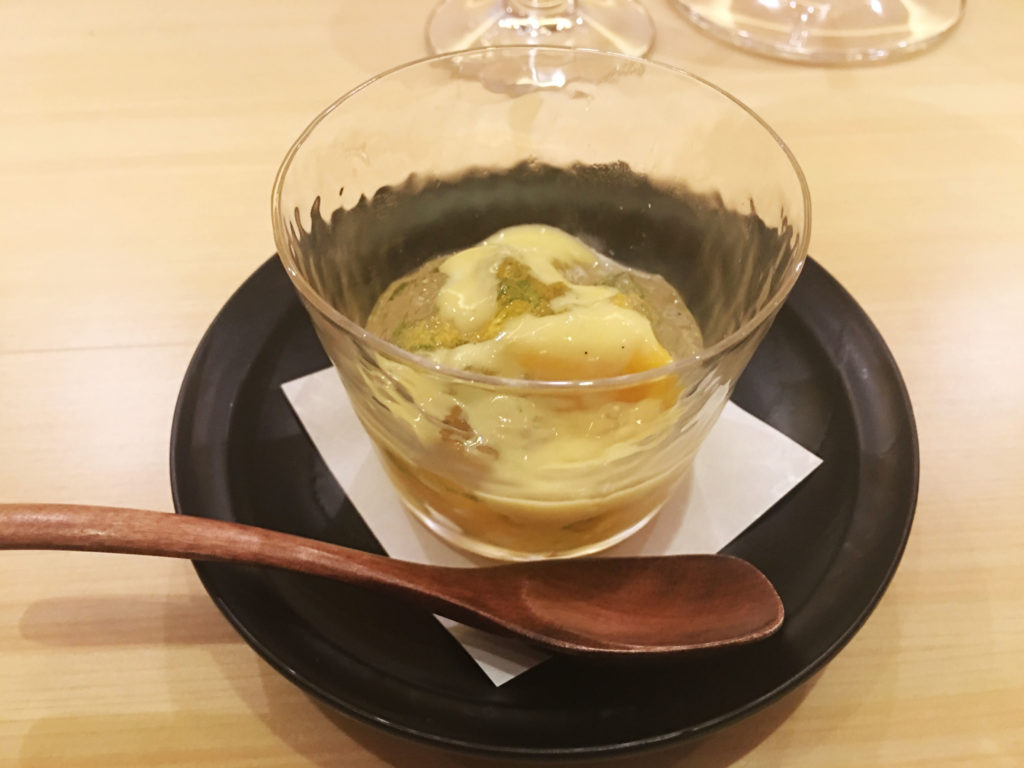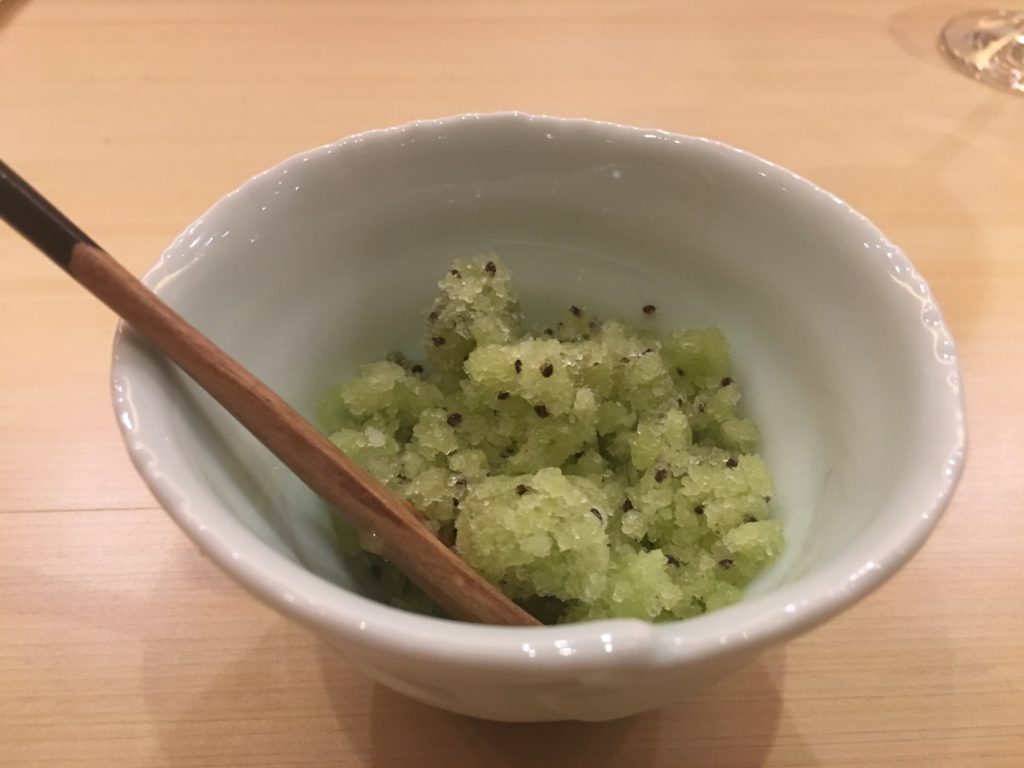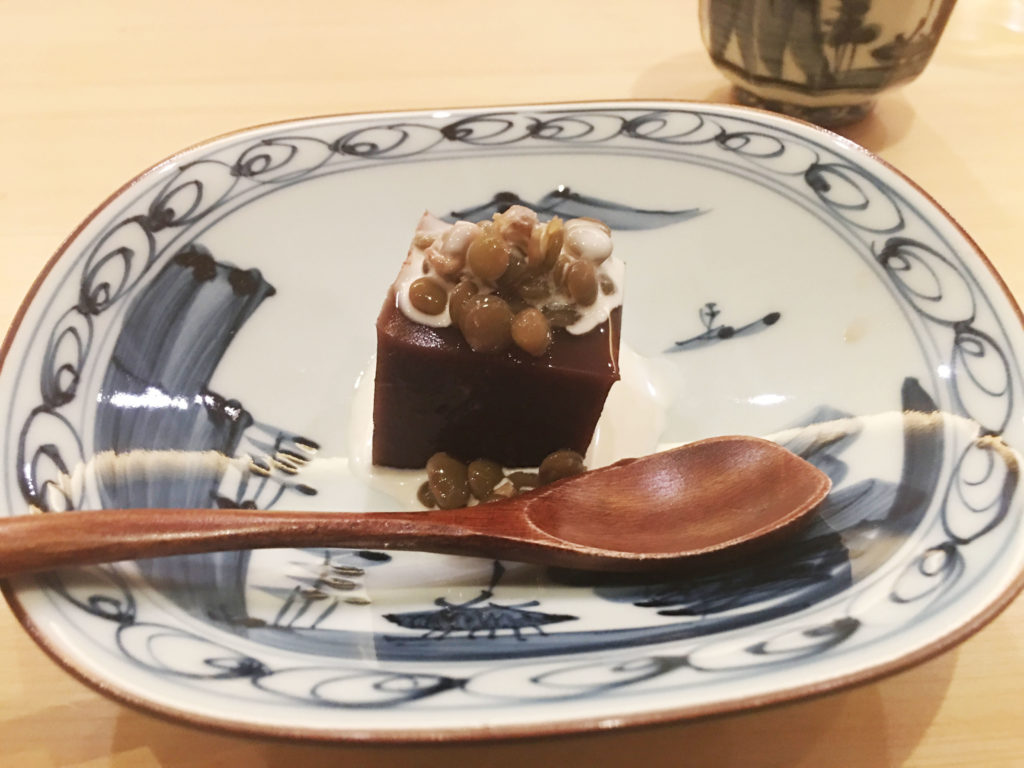February 26, 2017
Kenzo in the Napa Valley is an ambitious opening from Kenzo Estate winery owners Kenzo and Natsuko Tsujimoto. Interestingly, Kenzo Tsujimoto was the founder of Capcom prior to his ownership of Kenzo Estate winery. Besides the winery, the husband and wife couple have four restaurants and tasting rooms throughout Japan where they bring the Napa Valley wines to Japan. Now with Kenzo, they plan to bring an authentic taste and experience of Japan to the Napa Valley area with a focus on kaiseki and sushi.
Kenzo opened on November 16, 2016 and the owners hired chef and owner Hiroyuki Kanda of “Kanda” which has earned three Michelin stars for 9 consecutive years in Tokyo as their executive head chef. Chef Kanda apparently will work on the menu and training of the staff but he will not permanently oversee the restaurant since he still has a full-time job running “Kanda”. However, from the press releases, I read that he plans to close his Japanese restaurant for two-weeks at a time seasonally and bring his staff and team to Napa to maintain the quality and essence of his culinary point of view.
The interior of the restaurant is minimalistic in approach, yet has that distinctive zen-like elegance of Japan. I read Natsuko Tsujimoto is the designer and she has an amazing talent and great taste with the interior design as the restaurant exudes sophistication and allows you to have a sanctuary to enjoy your wine and dinner. You have the option of dining at the counter or at the tables in the dining area. Since it was date night with my wife, we choose the counter seats as I like the interaction with the chefs who are serving us.
There were two dinner options, one for a pre-fix kaiseki and another for a pre-fix sushi course. My wife and I love kaiseki during our travels in Japan, so we naturally chose the kaiseki course. Of interesting note is that the when we asked our server what the difference between the two menus as we saw similar courses, he mentioned that with the kaiseki menu you have a wagyu (beef) course, and that the sushi menu has a couple more sushi pieces. Here was our progression of our pre-fix dinner:
Uni chawan-mushi with grated ginger was the first course. The egg custard at the bottom was a perfectly cooked steamed egg custard that was so soft and delicate. It married up preferably with the briny ocean taste and creamy texture of the generous amount of uni. While the taste was perfect, visually it could have been improved by being topped with a whole petal of uni as the mashed up uni bits looks sloppy. Kaiseki is the haute cuisine of Japan, and not only does it need to taste good, but it has to be visually appealing.
The next course is the zensai course (assorted appetizer), which consisted of salmon sushi, gomae (sesame) tofu with wasabi glee, roasted duck, tamago yaki, simmered abalone, spinach ohitashi, and tilefish with ikura. Zensai is like the antipasto dish served before the main course and sometimes has items that are very elaborate in preparation, like simmered in a sweet soy dashi mix for days. The preparations here were more simpler, but was very good overall. My favorite was the cake-like tamago.
The next course was the otsukuri (sashimi) course and consisted of smoked bluefin tuna sashimi with grated daikon and horse-radish with double fermented soy sauce. The straw-smoked tuna coupled with the soy sauce was delicious. I really liked the combination. But, the slight mark against this dish is that it once again suffers visually as the cut of sashimi were uneven and looked sloppy and hastily put together.
The owan course was next. Owan are the elegant soup bowls and lids used to serve the dashi soup. Here we have Hokkaido scallop shinjo, shiitake mushroom, and asparagus in dashi soup. The shinjo is a type of dumpling, and this was exceptional as you can taste the sweetness of the big chunks of scallop. The dumpling had a nice chewy and firm texture. The dashi soup was also excellent as you can taste hints of the kombu and smokey bonito used to make the broth. Unfortunately on a personal note, I’m not a fan of asparagus in dashi soup as to me the asparagus is too strong a flavor on its own. I also feel it’s missing a herb like a sansho leaf or mitsuba leaf.
The yakimono (grilled) dish was a yuzu grilled hamachi (yellow tail) with crispy maitake mushroom. This dish was disappointing to me. You have a generous portion of hamachi, but this was the filet portion which does not have enough fattiness to stand up to this level of grilling, so ended up dry. You further have the crispy maitake mushroom with was also crunchy and dry. In the end, it was a dry on dry texture that is dull and boring. Perhaps a fattier cut, like the belly of the hamachi or another type of fish like gindara would have made the dish better. Also a sauce could have helped to hold the dish together better.
The next dish was the wagyu beef kuwayaki with watercress and nori salad. The watercress and nori salad was a nice combination that I really enjoyed. The wagyu was perfectly cooked and had a melt in your mouth texture from the fatty goodness of the Satsuma wagyu.
The next set of courses was the nigiri prepared by our sushi chef. Overall, the sushi was decent but had some miscues that overall left me a little disappointed. For instance, the shari (sushi rice) was a bit soft and some of the neta (sliced fish) was not cut well. For this course selections, we had four nigiri and one maki.
Sayori which is the half beak fish opened the nigiri courses. It was good.
Chu-toro nigiri, noticed the brushing of the tsume sauce was not even. It takes away from the overall taste and experience.
Kamasu is the barracuda fish. The neta once again does not look expertly cut and as a result did not mold around the shari appropriately.
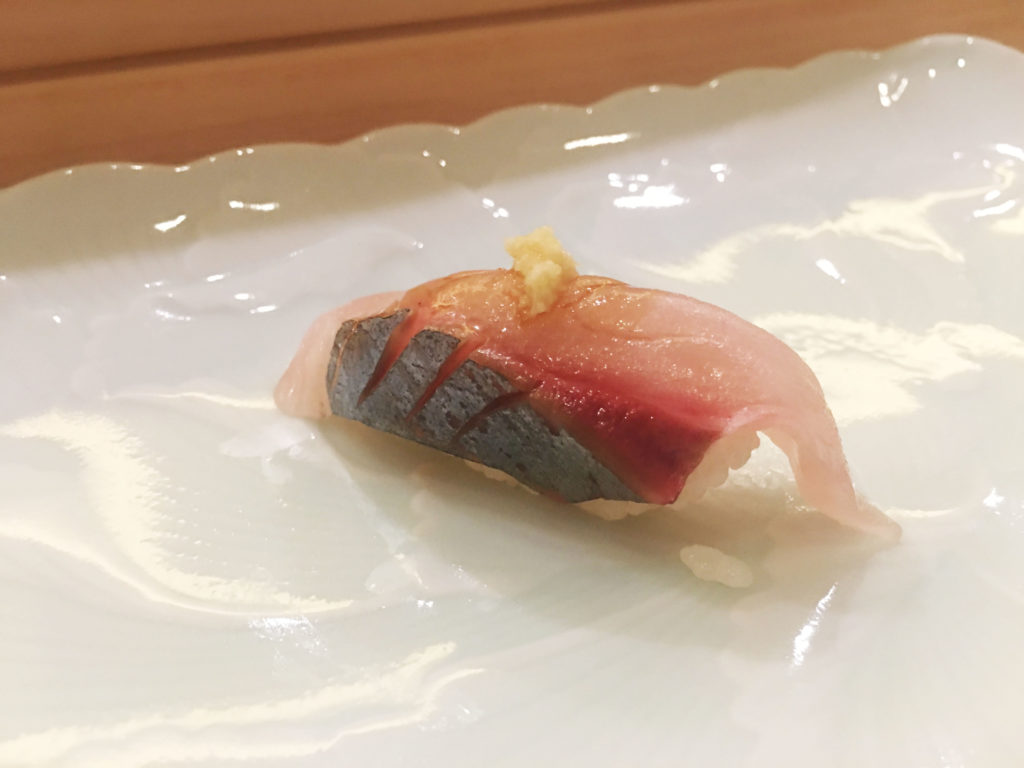 Shima aji was next which is a skip jack mackerel. It was topped with grated ginger. Again the slicing could have been much better.
Shima aji was next which is a skip jack mackerel. It was topped with grated ginger. Again the slicing could have been much better.
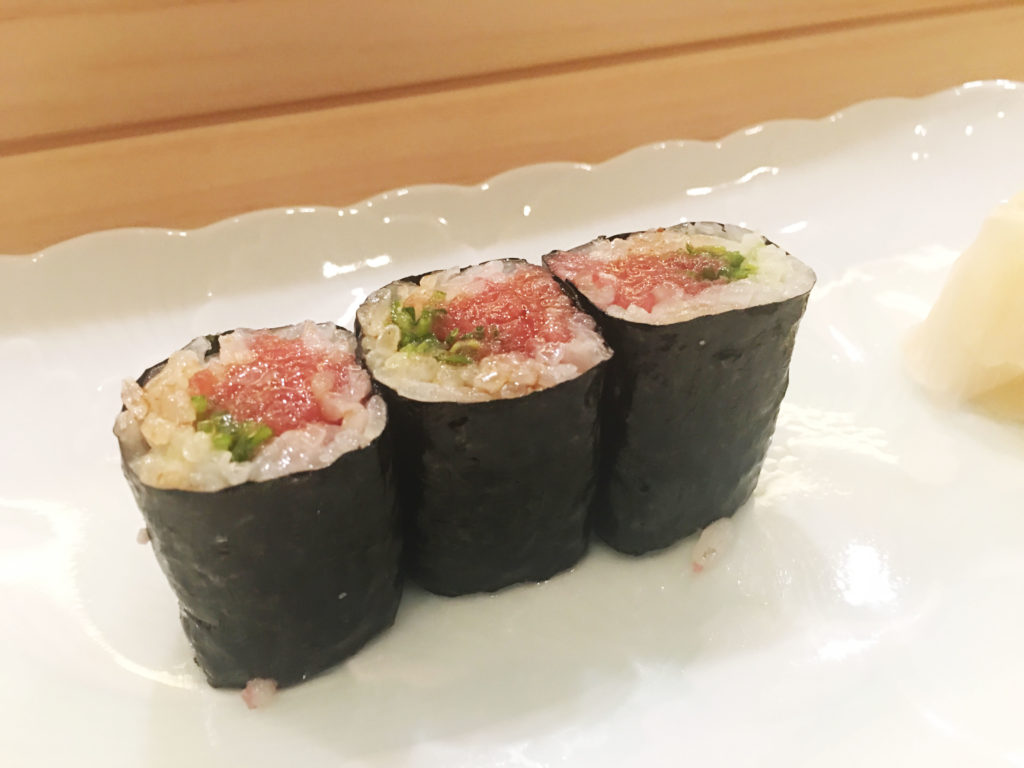 Negi-toro maki was the final sushi selection.
Negi-toro maki was the final sushi selection.
The red miso soup wraps up the main courses and dessert to follow.
Dessert opened with mango with mint grass jelly with anglaise sauce.
Kiwi granita followed which also served to cleanse the palace between the dessert courses.
The last dessert is a coffee infused yokan with lentils and heavy cream.
We enjoyed the dessert offerings as they were not too sweet and were each unique and different. Service during dinner was exceptional and we were attended to perfectly throughout our courses. I ordered the wine flight pairing and the wine was also great. I’m now a fan of Kenzo’s wines, especially the cabernet sauvignon called Ai. .
While I enjoyed the food overall and thought it was good, it was not great as some of the dishes missed a high level of finesse in its execution. I maybe overly critical of their food, but at $225/person, I expect a lot closer to greatness.
While Kenzo is great for the Napa Valley as the area does not have an authentic kaiseki restaurant, I would not recommend anyone to go out of their way to drive from San Francisco to solely eat at Kenzo like we did. The fact is that in San Francisco alone, the bar is raised on Japanese food and was set very high in 2016, with numerous exceptional omakase sushi places and two excellent kaiseki places that opened. One of which, Hashiri which also serves a kaiseki and sushi prefix meal at $300/person at the counter, was impressive. Additionally, OzaOza in Japantown of San Francisco was also very good for kaiseki and is a bargain at $100 per person. Of note is that I do not believe Chef Kanda was in the restaurant and he was probably back in Tokyo. Regardless of whether Chef Kanda was present, Kenzo is playing in a league and price point that suggest a better execution with or without the head chef. As such while I enjoyed the food, I came out slightly disappointed at a potential not realized.
